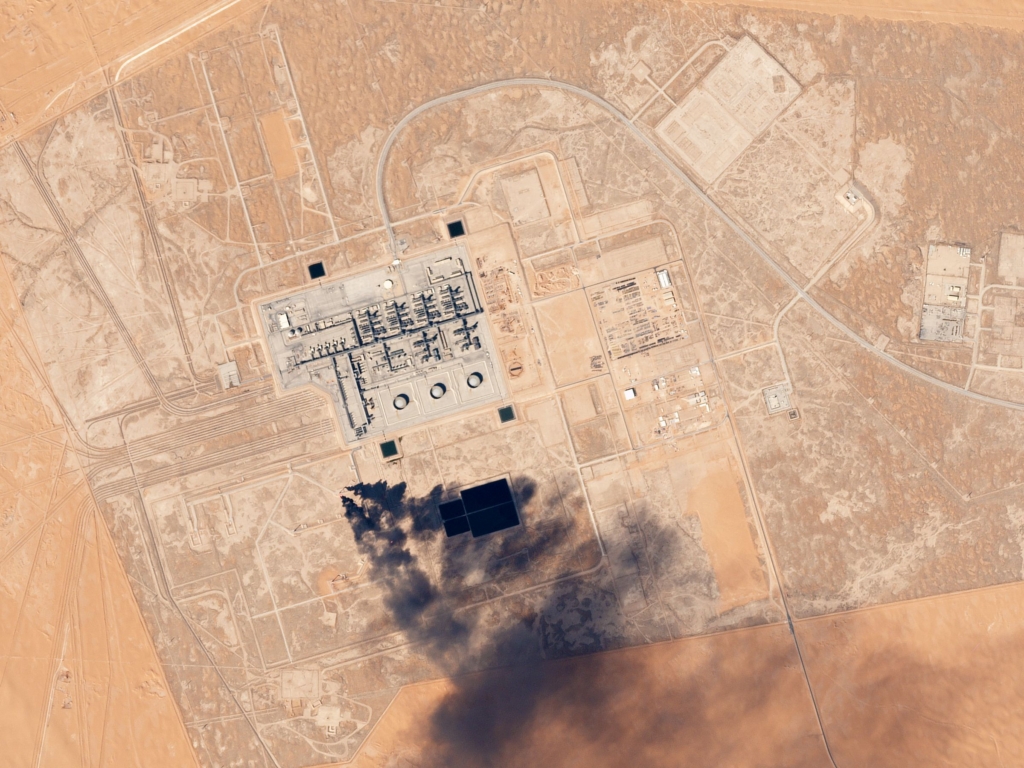by Maler Suresh

Photo: Planet Labs, Inc.
On September 14th, huge fires broke out at the largest oil processing facility in the world as the Abqaiq oil processing facility and Khurais oil field fell victim to drone strikes in the hours before dawn. Now, the US is deploying military defense forces to Saudi Arabia as well as accelerating the shipment of military hardware to the kingdom. The Houthi rebels from Yemen first claimed responsibility for the attacks, but it later became clear that a country supporting them, Iran, is also involved. Saudi Arabia is in conflict in Yemen as they try to reinstate the original Yemeni government against the will of the Houthi rebels. The drones were found to have originated from Iran, not Yemen, and Iranian President Hassan Rouhani said Saudi Arabia should see the attack as a warning to end the war in Yemen, while insisting the attack came from Yemeni forces.
The greatest fear after the strike was the effect on the global oil market. About five million barrels a day of production was affected for a few days immediately after the strike, and production of oil will be reduced by several million barrels a day for the future, but overall the oil market will be able to recover quickly because of the vast amounts of oil stored by each country. So if it seems to be an attack targeted at Saudi Arabia, why is the US getting involved? Saudi Arabia requested what the United States Secretary of Defense, Mark Esper, described as “extra defensive support,” that will “send a clear message that the United States supports our partners in the region.”
Another reason comes from Treasury Secretary Steve Mnuchin, who told reporters, “We are continuing the maximum pressure campaign.” In May, the US withdrew from a 2015 nuclear accord with Iran and implemented sanctions that would sharply accelerate its goal of driving Iran’s oil exports to zero. By trying to reduce Iran’s oil exports, the US effectively puts a lot of strain on the economy. The Trump administration’s hope is to manipulate Iran into agreeing to 12 demands that they must meet before the US lifts sanctions. The list asks Iran to accept new limits on its nuclear program, end ballistic missile tests, cut off support for US designated terror groups and free US citizens held in detention. But Iran is not having it. Iran’s leader, Ali Khameni, tweeted that the US should return to the nuclear deal if they want to negotiate, otherwise, “no negotiation will take place between the Islamic Republic and US officials at any level.” After the national security meeting on Monday, there is no news of an imminent military attack, and it appears that the US is trying to avoid larger scale border conflict with Iran.









